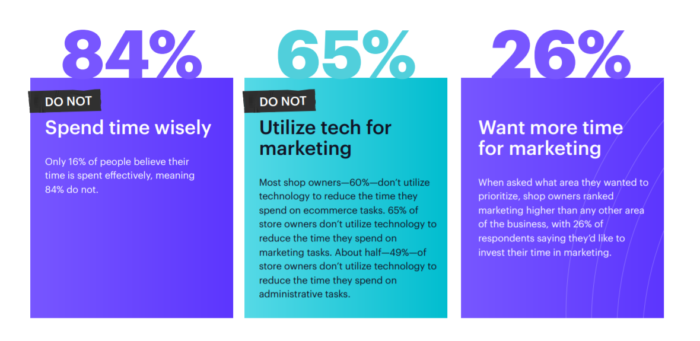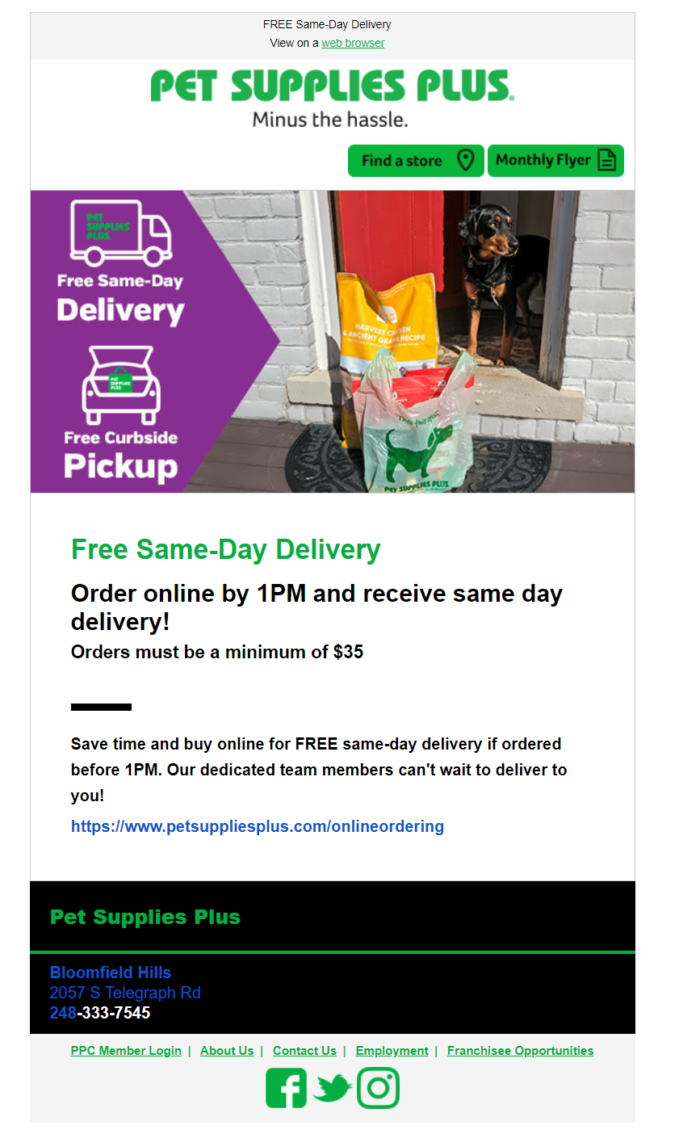How 2020 Disrupted Ecommerce and 7 Tips to Optimize Your Strategy
Most people will remember 2020 as a year filled with unbelievable hardships, financial ruin, trauma, and stress.
But we’ve also seen plenty of bright lights and opportunities shining to carry us through the darkness.
In 2020, ecommerce was suddenly thrown into focus as people adapted to life online.
Even as countries lift lockdown measures, people aren’t abandoning their taste for ecommerce and online retail:

Today, we’ll look at 2020 ecommerce: how it’s changed and what it all means. We’ll also cover a handful of ideas and strategies for you to optimize your ecommerce store for today, 2021, and beyond.
In 2020, ecommerce went through a massive transformation—here’s what’s changed.
Ask five people what their 2020 was like and you’ll get five remarkably different answers.
Here’s how the wild ride through 2020 has shaped the ecommerce landscape.
Demand for ecommerce solutions has skyrocketed.
It’s no secret that the more consumers avoid in-person shopping, the more ecommerce demand rises.
At its peak in mid May, ecommerce sales were up 128% from the previous year. They’ve fallen a bit from that point as lockdown measures have eased in some places, but ecommerce still follows a steady trajectory upwards.
Consumers buy everything online now, including:
- Books and entertainment
- Self-care tools and resources
- Home fitness equipment
- Décor and home office furniture
2020 ecommerce shifted customer expectations.
2020 ecommerce shows us that customers expect brands to roll with the punches and adapt to their changing expectations.
Social distancing and lockdown measures gave way to new ecommerce opportunities and expectations like:
- Updated store hours
- Maximum capacity changes
- Curbside pickup
- Free shipping
- Adapted products or services (Panera, for example, started selling groceries and family meals)
Big Box brands optimized their ecommerce game in 2020.
As of late June, nearly half of Americans were jobless. Twenty million Americans who rent (20%) face eviction.
Meanwhile, 25 of the world’s wealthiest people gained another $255 billion between March and May. Jeff Bezos alone boosted his own wealth by nearly $30 billion.
Big Box stores used the pandemic lockdowns as an opportunity to clamp down on surging ecommerce sales and swoop up corporate bailouts.
Now small ecommerce businesses must compete against Walmart, Target, and other giants in a way they haven’t had to in the past.
Supply chain disruptions showed what brands are made of.
Life has never been so uncertain:
- Someone at a USPS distribution center could test positive for COVID-19, forcing the place to shut down for cleaning.
- Warehouse workers could strike due to unsafe working conditions.
- Border lockdowns could hold supplies hostage on the other side of the world.
Everyone knows hiccups are inevitable right now. The question is: How do brands respond to these issues? Are they transparent and accommodating or quite absent?
2020 ecommerce turbocharged mobile shopping.
Consumers use their phones more to shop these days in two ways.
- About 72.1% of shoppers open their smartphone in-store to enhance their shopping experience, up from 49.6% last year.
- An estimated 54% of all ecommerce sales will happen on mobile devices in 2021.
Consumers are more comfortable using their phones to shop, browse products, and claim discounts while in the store.
Technology became critical for ecommerce in 2020.
We asked over 1,000 ecommerce stores what their biggest priority was this year. In February, 32% said it was their IT. By June, however, that figure jumped to 48%.
More ecommerce stores are also using technology to automated processes like email marketing—something less than half of businesses used earlier this year.

Growing ecommerce companies learned to scale quickly.
COVID-19 lockdowns forced businesses to scale on a massive level. Offices quickly became a thing of the past as ecommerce companies learned to get by with less.
Values were thrown into focus.
Growing economic inequality and systemic racism pushed people into the streets. Brands quickly drafted responses to public demands and evaluated their internal race relations.
What should you learn from the 2020 ecommerce landscape to prepare for the future?
Sure, 2020 ecommerce was a whirlwind, but what does it mean for you?
How can you take what we’ve experienced over the past year and use it to grow?
As usual, your customers hold the answer.
1. Treat your website experience like your virtual storefront.
Eighty-six percent of customers are fine with a product costing more if it comes with an excellent experience. Your website and digital marketing are all you have to create a unique experience for your customers.
Make sure to:
- Include high-quality photos of products or 360° photos.
- Provide accurate and detailed descriptions.
- Promote in-depth reviews.
- Supply seamless navigation, filtering, and search.
- Prioritize customer service through email, live chat, or messenger apps.
- Create a branded shopping app.
2. Remain as dynamic as your customers.
Yes, customer expectations might have shifted, but they still want the same thing as always: products and services that make their lives easier.
Stay on the lookout for ways you can improve the lives of your customers, whether that be:
- Rewards and loyalty programs
- Personalized discounts and coupons
- Free and fast shipping
- Updated store hours
- Curbside pickup or buy-online-pickup-in-store
Pet Supplies Plus started offering free shipping and same-day delivery:

3. Strive for transparency, not perfection.
No one expects you to have all the answers. No one expects every transaction to go off without a hitch.
Perfection isn’t the goal right now; transparency is. Customers want you to be straight with them about what’s happening in your business.
Let customers know if:
- Someone at your warehouse/store tested positive and you’re shutting down for cleaning.
- Workers need to take time off to care for themselves or someone else.
- Warehouses shut down or supply chains were disrupted.
- Shipping is taking longer than usual.
If you haven’t implemented real-time tracking for orders yet, now’s the time to get on that. Include a link in every transactional email.
Notice how Zenni Optical uses dynamic content in their email to detect the customer’s location and provide accurate updates:

4. Optimize your mobile shopping experience.
Mobile shopping demands a seamless handoff between devices and a frictionless checkout entirely via mobile.
Some of your shoppers might browse and add items to their cart from a smartphone but log onto their desktop to complete the purchase. Make sure their items stay in that cart across every device.
You can also use an abandoned cart email campaign to remind them about the products.
Likewise, optimize your mobile checkout:
- Make it easy to add/delete items from their cart.
- Provide transparent shipping costs and fees.
- Use autocomplete for address fields and credit card info.
- Offer a wide range of payment options.
- Don’t force shoppers to use drop-down menus for dates or states.
- Provide a guest checkout option.
5. Take advantage of technology and automation.
Email is filled with innovative technology to help you personalize and automate your marketing and correspondence.
Only 45% of respondents in our survey use automation to personalize their email, so using tools like CM Commerce will put you ahead of competitors.
- Send campaigns with curated product recommendations based on browsing behavior.
- Set up an onboarding and welcome series (and track what people click).
- Remind customers of products they added to their cart.
- Optimize your transactional emails with upsells and cross-sells.
- Ask for feedback/reviews/photos and build a library.
Notice how World Market sends abandoned cart emails to every customer:

6. Promote your culture and values.
As businesses around the world were still reeling from COVID-19, social unrest swept the globe in response to systemic racism and income inequality.
Brands, many of whom actively avoided mentioning Black Lives Matter, quickly drafted their own responses to the protests. At this point, it’s almost strange for brands NOT to mention something about their social values.
Talk to people on your team and consider causes you donate to.
7. Make sure your website is accessible to everyone.
As more people started shopping online, more ADA complaints and lawsuits followed.
Everyone should be able to use your website in its entire capacity. Always follow the Website Accessibility Standards for factors like:
- Keyboard output for people who can’t use a mouse
- Audio transcripts
- Alternative image text
Wrap up
If nothing else, 2020 is undoubtedly a year of change, whether for better or worse. You can’t control the market, your surroundings, or your customers, but you can control how you adapt.
Always keep the needs and expectations of your shoppers at the forefront of your mind and consider these strategies:
- Optimize your mobile shopping experience.
- Use technology to automate your email marketing and other processes.
- Aim for transparency, not perfection.
- Prioritize accessibility for everyone.
- Build a strategy for long-term sustainability, not rapid growth.
- Highlight your values and the good you bring to the world.
Curious how you stack up against other ecommerce stores? Download our Ecommerce Confessions research to find out how 1,000+ store owners spend their time.